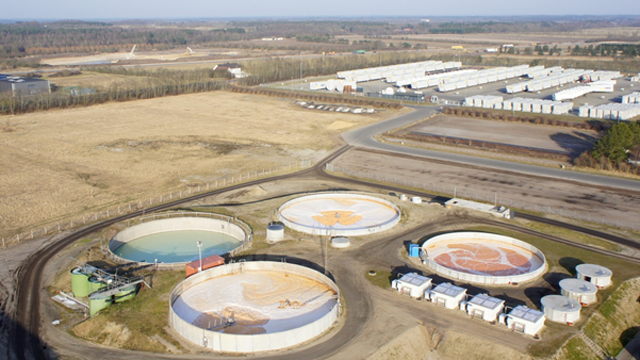From murky problem to crystal-clear solution
Potato starch producer KMC solved bacteria caused wastewater problem using Alfa Laval’s membrane bioreactor.
DATE 2023-11-28
KMC is one of the leading companies in Europe in the development, production and sales of food ingredients and other products derived from starch potatoes.
The company was founded in 1933 and has its headquarters in the small town of Brande in one of the predominantly agricultural parts of Denmark. As a result, the company is intensely aware of its image in the local community, and the responsibilities this entails.
The spirochete situation
In the autumn of 2005, problems with spirochete bacteria in the effluent flow from the KMC Derivat factory for modified potato starch were giving recurrent problems. The local municipality even imposed fines because the level of sus- pended solids in the effluent was far above the set limit. Furthermore, the effluent – even though pre-treated by KMC – was having a negative impact on operations at the local waste water treatment plant.
Spirochetes are long, filament-like bacteria that can present major difficulties for the operation of a waste water treatment plant. The problem is that they do not settle to the bottom of the settlement tanks used in conventional waste water treatment plants. They also create chaos in the delicate bacterial balance that the plant relies on to treat the water.
 Searching for a solution
Searching for a solution
As KMC Technical Director Jesper Jensen points out, “We simply couldn’t accept that our excellent reputation was being affected by a situation like this – nor that we risked restrictions being imposed on our production activities. We therefore searched the entire market for a way to tackle this situation effectively. Because of the special nature of the Danish market, we could only find two companies in a position to help us – Alfa Laval and a company in Japan.”
Comparative Testing
For a period of 3 months, KMC conducted side-by-side pilot tests designed to compare the Alfa Laval Hollow Sheet membrane filtration module (MFM) with a seemingly comparable Japanese installation.
Full-scale installation
Based on the results of the pilot test, KMC decided to invest in a full-scale membrane bioreactor featuring eight Alfa Laval hollow-sheet Membrane Filtration Modules (MFM 200s), with a total installed area of 2,400 m2. These modules are based on the Alfa Laval Hollow Sheet concept, which provides completely even flux over the entire surface of the membrane. The plant is able to operate with an MLSS concentration of 8–11 g/l and treat 480 cubic metres of effluent daily
| Performance | COD (mg/litre) | Nitrogen (mg/litre) | Phosphorus (mg/litre) | Suspended solids (mg/litre) |
|---|---|---|---|---|
| Original KMC treatment installation | 750 | 12 | 44 | >400 |
| Alfa Laval MBR module | 20 | 4.5 | 1.5 | <3 |
Customer's voice
In addition to the distinct performance advantages that the Alfa Laval set-up provided, KMC's Technical Director Jesper Jensen noted a big difference in the follow-up.
“The Alfa Laval people were incredibly professional in their whole approach. They put a lot of effort into helping us, and were so confident about the capabilities of their system that they were fully prepared to give us the kind of process and durability guarantees we needed. We’re confident that the Hollow Sheet elements will last the distance.
Environmental Engineer Lene Rübner-Petersen from KMC sums up the benefits:
“The water we discharge from our system is now incredibly clean, and we’ve been able to dispense with investing in a large new settlement tank.”
Product
The all-in-one Alfa Laval Membrane bioreactor (MBR) system combines secondary and tertiary wastewater treatment and delivers a superior effluent quality (effective filtration in sludge to 0.01 µm) suitable for reuse.
Download the story
Industrial water and waste treatment
Alfa Laval offers a variety of solutions for on-site water and waste treatment plus recovery of water, heat and even products from your process.
Key performance features include
- KMC’s batch production of modified potato starch means that the installation has had to cope with widely fluctuating effluent quantity – and has done so without problems.
- Flux levels have been slightly better than the figures achieved during the pilot period
- Average Trans Membrane Pressure (TMP) levels of only 80–100 mm have been achieved. This compares extremely favourably with figures from other known membrane technologies for MBR installations, which are normally higher by a factor of 10.
- The plant has been operating since March 2007. As a result of the consistently low TMP levels, no fouling was observed and there was no direct need to carry out any CIP procedures.
- Despite a demanding filtration environment consisting of waste water with a wide range of starch residuals, the operation/relaxation protocol used so far has provided consistently high levels of performance.
- The output from KMC’s treatment plant is actually of better quality than the final output from the municipal waste water treatment plant.